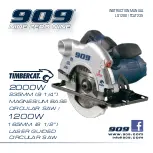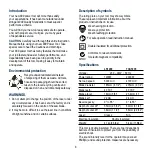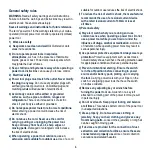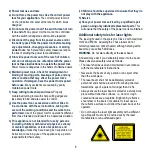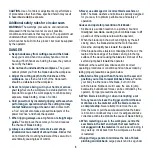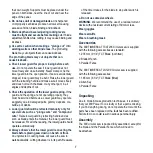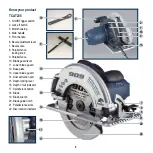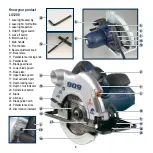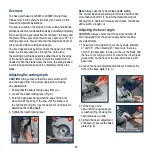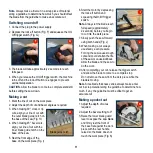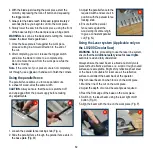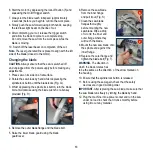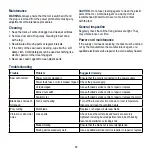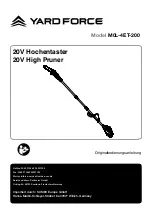
6
CAUTION.
Use of controls or adjustments or performance
of procedures other than those specified herein may result
in hazardous radiation exposure.
Additional safety rules for circular saws
WARNING!
The warnings, precautions, and instructions
discussed in this manual cannot cover all possible
conditions and situations that may occur. The operator must
understand that common sense and caution are factors
which cannot be built into this product, but must be supplied
by the operator.
DANGER
a.
Keep hands away from cutting area and the blade.
Keep your second hand on auxiliary handle, or motor
housing. If both hands are holding the saw, they cannot
be cut by the blade.
b.
Do not reach underneath the workpiece.
The guard
cannot protect you from the blade below the workpiece.
c.
Adjust the cutting depth to the thickness of the
workpiece.
Less than a full tooth of the blade teeth
should be visible below the workpiece.
d.
Never hold piece being cut in your hands or across
your leg.
Secure the workpiece to a stable platform. It is
important to support the work properly to minimize body
exposure, blade binding, or loss of control.
e.
Hold power tool by insulated gripping surfaces when
performing an operation where the cutting tool may
contact hidden wiring or its own cord.
Contact with
a “live” wire will also make exposed metal parts of the
power tool “live” and shock the operator.
f.
When ripping always use a rip fence or straight edge
guide.
This improves the accuracy of cut and reduces
the chance of blade binding.
g.
Always use blades with correct size and shape
(diamond versus round) of arbour holes.
Blades that
do not match the mounting hardware of the saw will run
eccentrically, causing loss of control.
h.
Never use damaged or incorrect blade washers or
bolt.
The blade washers and bolt were specially designed
for your saw, for optimum performance and safety of
operation.
Causes and operator prevention of kickback:
•
Kickback is a sudden reaction to a pinched, bound or
misaligned saw blade, causing an uncontrolled saw to lift
up and out of the workpiece toward the operator;
•
When the blade is pinched or bound tightly by the kerf
closing down, the blade stalls and the motor reaction
drives the unit rapidly back toward the operator;
•
If the blade becomes twisted or misaligned in the cut, the
teeth at the back edge of the blade can dig into the top
surface of the wood causing the blade to climb out of the
kerf and jump back toward the operator.
Kickback is the result of saw misuse and/or incorrect
operating procedures or conditions and can be avoided by
taking proper precautions as given below.
a.
Maintain a firm grip with both hands on the saw and
position your arms to resist kickback forces.
Position
your body to either side of the blade, but not in line
with the blade. Kickback could cause the saw to jump
backwards, but kickback forces can be controlled by the
operator, if proper precautions are taken.
b.
When blade is binding, or when interrupting a cut
for any reason, release the trigger and hold the saw
motionless in the material until the blade comes to
a complete stop.
Never attempt to remove the saw
from the work or pull the saw backward while the blade
is in motion or kickback may occur. Investigate and take
corrective actions to eliminate the cause of blade binding.
c.
When restarting a saw in the workpiece, centre the
saw blade in the kerf and check that saw teeth are
not engaged into the material.
If saw blade is binding, it
may walk up or kickback from the workpiece as the saw
is restarted.
d.
Support large panels to minimise the risk of blade
pinching and kickback.
Large panels tend to sag under

